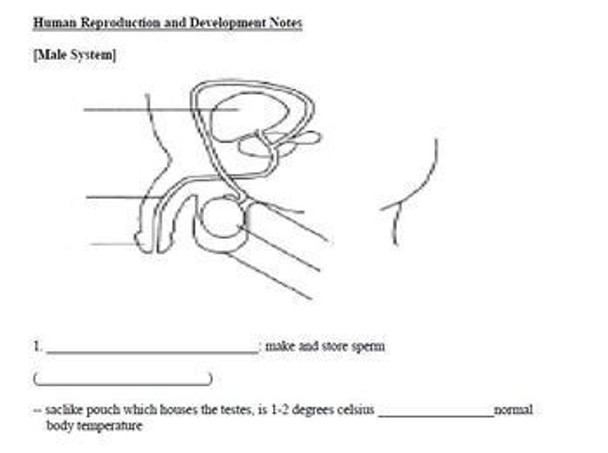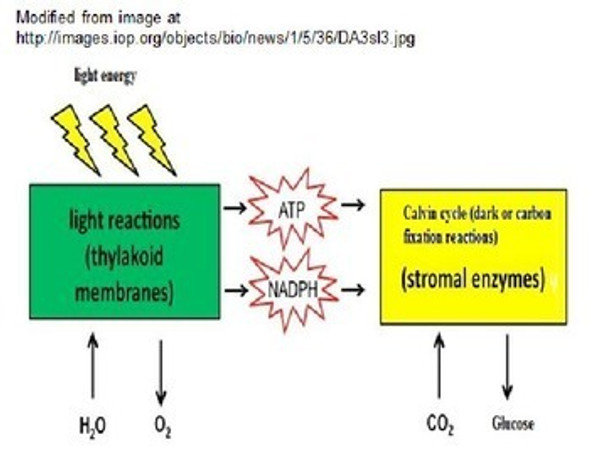Description
This zip file contains 18 different activities (51 pages of materials and more) which can be used to compose a unit for biology students introducing them to the topics of reproduction and development, with the focus on humans. The specific learning goals addressed in this unit are listed below the description of the contents of the zip file.
All student documents are available in both editable word as well as pdf format so you are able to tailor those documents to suit your course. Some answer keys are available as word documents as well. These documents are well suited for use in distance learning environments.
The learning activities have been correlated to the NGSS, Common Core and NY Living Environment Core curriculum standards. It contains the following items:
- Marzano self assessment scale for students specific to this unit correlated to NY State and NGSS learning standards
- Cloze completionnotes handout for students with learning goals
- 71 slide PowerPoint to accompany the cloze completion notes that also contains 7 bell ringers with answers
- Reproduction and Development worksheet 1 with answer key
- Reproduction and Development Essay with answer key
- Reproduction and Development worksheet 2 with answer key
- Reproduction Jeopardy review game in PowerPoint format
- Human Reproduction and Development quiz with key
- Reproduction and Development exam with key
- Down Syndrome reading, writing and graphing activity
- Curriculum Correlations to the NGSS, Common Core and NY Living Environment curriculum standards
Human Reproduction and Development Learning Goals
Upon the completion of this unit the students will be able to:
1. describe some major mechanisms of reproduction and development in fish, amphibians, reptiles, birds and mammals.
2. discuss the roles of the ovary, fallopian tube, uterus, cervix and vagina and correctly identify these in a diagram.
3. state the major function(s) of the following in the human male reproductive system; testes, scrotum, vas deferens, Prostate gland, urethra, and penis and correctly identify these in a diagram.
4. discuss the role of the placenta, amnion and umbilical cord in embryonic development and correctly identify these in a diagram.
5. discuss the function of the mammary glands.
6. discuss the roles of mitosis and differentiation in embryonic/fetal development.
7. identify in an embryonic development diagram the place where differentiation begins to occur.
8. recognize that in differentiation cells have the same DNA, but different genes are switched on and off.
9. explain why toxins have a more adverse effect on fetal development in the 1st trimester.
10. recognize most fetal growth is in the third trimester.
11. correctly define the terms growth, aging, and death.
12. recognize that patterns of development vary between different plants and animals.
13. state the function(s) of the following key reproductive hormones in humans; testosterone, progesterone, estrogen, FSH, and LH.
14. define the terms gestation period and in vitro fertilization.
NGSS Standards
Students who demonstrate understanding can:
HS-LS1-4. Use a model to illustrate the role of cellular division (mitosis) and differentiation in producing and maintaining complex organisms.
HS-LS3-1. Ask questions to clarify relationships about the role of DNA and chromosomes in coding the instructions for characteristic traits passed from parents to offspring.
HS-LS3-2. Make and defend a claim based on evidence that inheritable genetic variations may result from: (1) new genetic combinations through meiosis, (2) viable errors occurring during replication, and/or (3) mutations caused by environmental factors.
Common Core State Standards Connections:
ELA/Literacy
RST.11-12.1 Cite specific textual evidence to support analysis of science and technical texts, attending to important distinctions the author makes and to any gaps or inconsistencies in the account.
RST.11-12.9 Synthesize information from a range of sources (e.g., texts, experiments, simulations) into a coherent understanding of a process, phenomenon, or concept, resolving conflicting information when possible.
SL.11-12.5 Make strategic use of digital media (e.g., textual, graphical, audio, visual, and interactive elements) in presentations to enhance understanding of findings, reasoning, and evidence and to add interest.
WHST.9-12.1 Write arguments focused on discipline-specific content.
Mathematics
MP.2 Reason abstractly and quantitatively.
MP.4 Model with mathematics.
NY Living Environment Core Curriculum
Performance Indicator 4.1
Explain how organisms, including humans, reproduce their own kind.
Major Understandings
4.1a Reproduction and development are necessary for the continuation of any species.
4.1b Some organisms reproduce asexually with all the genetic information coming from one parent. Other organisms reproduce sexually with half the genetic information typically contributed by each parent. Cloning is the production of identical genetic copies.
4.1c The processes of meiosis and fertilization are key to sexual reproduction in a wide variety of organisms. The process of meiosis results in the production of eggs and sperm which each contain half of the genetic information. During fertilization, gametes unite to form a zygote, which contains the complete genetic information for the offspring.
4.1d The zygote may divide by mitosis and differentiate to form the specialized cells, tissues, and organs of multicellular organisms.
4.1e Human reproduction and development are influenced by factors such as gene expression, hormones, and the environment. The reproductive cycle in both males and females is regulated by hormones such as testosterone, estrogen, and progesterone.
4.1f The structures and functions of the human female reproductive system, as in almost all other mammals, are designed to produce gametes in ovaries, allow for internal fertilization, support the internal development of the embryo and fetus in the uterus, and provide essential materials through the placenta, and nutrition through milk for the newborn.
4.1g The structures and functions of the human male reproductive system, as in other mammals, are designed to produce gametes in testes and make possible the delivery of these gametes for fertilization.
4.1h In humans, the embryonic development of essential organs occurs in early stages of pregnancy. The embryo may encounter risks from faults in its genes and from its mother's exposure to environmental factors such as inadequate diet, use of alcohol/drugs/tobacco, other toxins, or infections throughout her pregnancy.
Appendix A -- Lab Skills
¥ Organizes data through the use of data tables and graphs
¥ Analyzes results from observations/expressed data
Bundle and Save!
Many more biology materials are available from Monday's Rescue. The Biology/Life Science Course contains 22 units which can be used to develop a full year course. A purchase of the Biology/Life Science Course provides significant savings of over 70% compared to purchasing each of the 22 units individually. This course is available for $24.99. It contains over 900 pages of learning materials and 1500 plus PowerPoint slides.
This year long course contains the following units;
- Life Processes and Introduction to Classification Learning Activities
- Cell Structure and Function Lesson Activities
- Membrane and Membrane Processes Learning Activities
- Introduction to Biochemistry and Enzymes Lesson Activities
- Human Nutrition Learning Activities
- Human Circulation Learning Activities
- Immunity Lesson and Lab Activities
- Human Respiration Learning Activities
- Introduction to Cell Respiration Learning Activities
- Introduction to Human Excretion and Human Locomotion Learning Activities
- Nervous and Endocrine Systems Lesson Activities
- Introduction to Mitosis and Asexual Reproduction Lesson Activities
- Introduction to Meiosis Lesson Activities
- Reproduction and Development Lesson Activities
- Plant Systems and Adaptations Lesson Activities
- Photosynthesis Learning Activities
- Plant Reproduction and Development Lesson Activities
- Classical Genetics Learning Activities (Mendelian and Beyond Mendel)
- Introduction to DNA, RNA, Protein Synthesis and Biotechnology Lesson Activities
- Introduction to Evolution Lesson Activities
- Ecology Lesson Activities
- Human Ecology Learning Activities
- Complete NY State Living Environment Regents Review Packets with Answers
View the contents of the whole year course in more detail at Biology/Life Sciences Complete Course
Terms of Use
Purchase of the product is for classroom use by the purchaser only. It is a violation for individuals, schools, and districts to redistribute or sell this item on the Internet or to other individuals. I do encourage you to use and edit these documents to suit your needs with your own students in distance learning environments.
This work is licensed under a Creative Commons Attribution-NonCommercial-ShareAlike 4.0 International License.


























